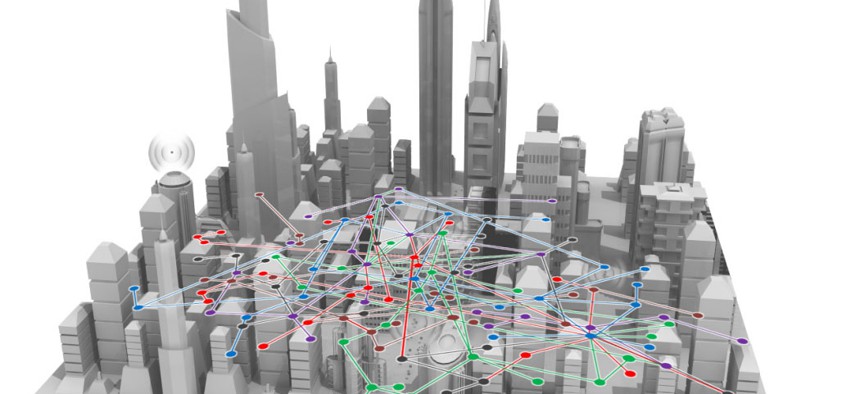DARPA puts its money on spectrum sharing
The research agency offers a $2 million prize for technologies that use software-defined radios and machine learning to make more efficient use of the RF spectrum.
As the Pentagon seeks to cram more electronic gear and wireless devices into a shrinking amount of radio spectrum, its research arm announced guidelines this week for yet another technology competition designed to find new ways to share and ensure access to the airwaves.
The Defense Advanced Research Projects Agency announced a Spectrum Collaboration Challenge in March designed to leverage emerging machine-learning tools. The goal is to develop smart systems that can adapt in real time to congested spectrum as a way to boost the overall flow of radio frequency signals.
DARPA this week formally announced the three-year competition would begin in 2017, with the finalists competing in 2019 for a $2 million grand prize. Competitors operating software-defined radios will seek to collaborate with other radios operating simultaneously in ways that optimize spectrum efficiency across an entire communications network, the agency said.
Program managers in DARPA's Microsystems Technology Office said the competition aims to redefine conventional spectrum management using emerging tools like programmable software-defined radios augmented with machine learning tools. "We want to radically accelerate the development of machine-learning technologies and strategies that will allow on-the-fly sharing of spectrum at machine timescales," Paul Tilghman, program manager for the spectrum challenge, noted in a statement.
The machine learning approach would replace the outdated practice of assigning specific frequencies for exclusive use, a rigid framework that is failing to keep pace with surging demand for spectrum. In one scenario, spectrum could be shared among different users by leveraging machine-learning and other AI tools that would help direct traffic.
The urgency to develop real-time spectrum-sharing capabilities is growing as the military fields many more wireless systems like tactical radios that are increasingly used to coordinate missions. The ability to nimbly share wireless spectrum is expected to grow as more unmanned vehicles and aircraft are deployed.
Meanwhile, boosting spectrum efficiency has taken on even greater urgency with an executive order requiring that the Defense Department free up 500 MHz of its spectrum for commercial use by 2020.
This week's announcement by DARPA lays out the ground rules for the spectrum challenge and securing slots for the upcoming competition, which is open to companies, startups, universities and "hackers in a garage," the agency said. Entrants will be required to demonstrate their ability to use software-defined radios, the programmable RF technology designed to provide spectrum agility as waveforms change.
Teams also must demonstrate the ability to boost spectrum sharing-using AI techniques such as machine learning that autonomously discern constant changes in the wireless spectrum environment.
The defense agency has increasingly turned to technology competitions in areas like cyber defense and spectrum sharing as a way to advance technology innovation by leveraging emerging analytics and machine learning tools.





